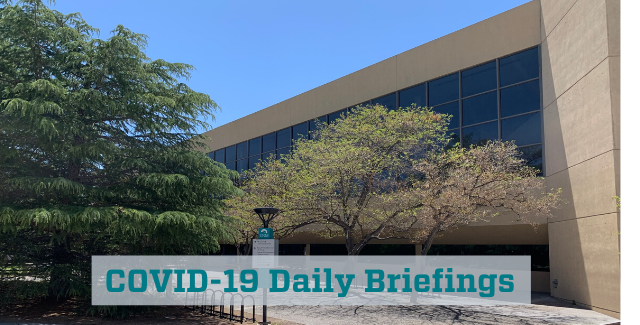Document Type
Brief
Publication Date
5-11-2020
Abstract
Executive Summary:
NM case counts. Navajo Nation documentary. Medicaid reimbursement increase. Excess NYC mortality. German R0>1. Chile COVID-19 certificates. High female incidence in Quebec. Swab 3D printing. Evidence lacking school reopening. Cloth mask review. WHO 2nd wave warning. Higher mortality in minorities. Environmental transmission controls. Behavior change. Correctional environment guidelines. Wuhan hospital transformation. Maximizing GI training. Threat and conformity. Recommendations on managing COVID-19 (first Italian SARS patients), and obesity and metabolic syndrome. Guidelines for neurologists. Ethics of off-label drugs use. Abbott antibody test approval. CRISPR test FDA approval. Viral sample inactivation. HCQ+azithromycin no benefit. Public-Private partnership for clinical trials. Drug repurposing. Cancer patient considerations. 35 new COVID-19 trials. Hyperinflammatory shock in children. Symptom app.
Recommended Citation
Lambert, Christophe G.; Shawn Stoicu; Ingrid Hendrix; Lori D. Sloane; Anastasiya Nestsiarovich; Praveen Kumar; Nicolas Lauve; LynnMarie Jarratt; Fiona Nguyen; Ryen Ormesher; Melisa Cossé; Susie Pham; Timothy Campbell; Jenny Situ; Randy Ko; Alexandra Yinglng; Elly Munde; Cristian Bologa; Kristine Tollestrup; Orrin Myers; and Douglas J. Perkins. "2020-05-11 DAILY UNM GLOBAL HEALTH COVID-19 BRIEFING." (2020). https://digitalrepository.unm.edu/hsc_covid19_briefings/32


Comments
Disclaimer: The UNM Global Health COVID-19 Briefing is provided as a public service. Sources include not only peer-reviewed literature, but also preliminary research manuscripts that have not been peer reviewed along with lay news media reports. The peer-review process often results in manuscript improvement, with corrections made for errors and unsubstantiated conclusions being corrected. Furthermore, many headlines and summaries in the briefing are written by student volunteers and others who may lack subject matter expertise in this rapidly evolving field. As such, the headlines and summaries should not be regarded as conclusive. Instead, readers are encouraged to use the briefing to identify areas of interest and then use the embedded links to read and critically evaluate the primary sources.